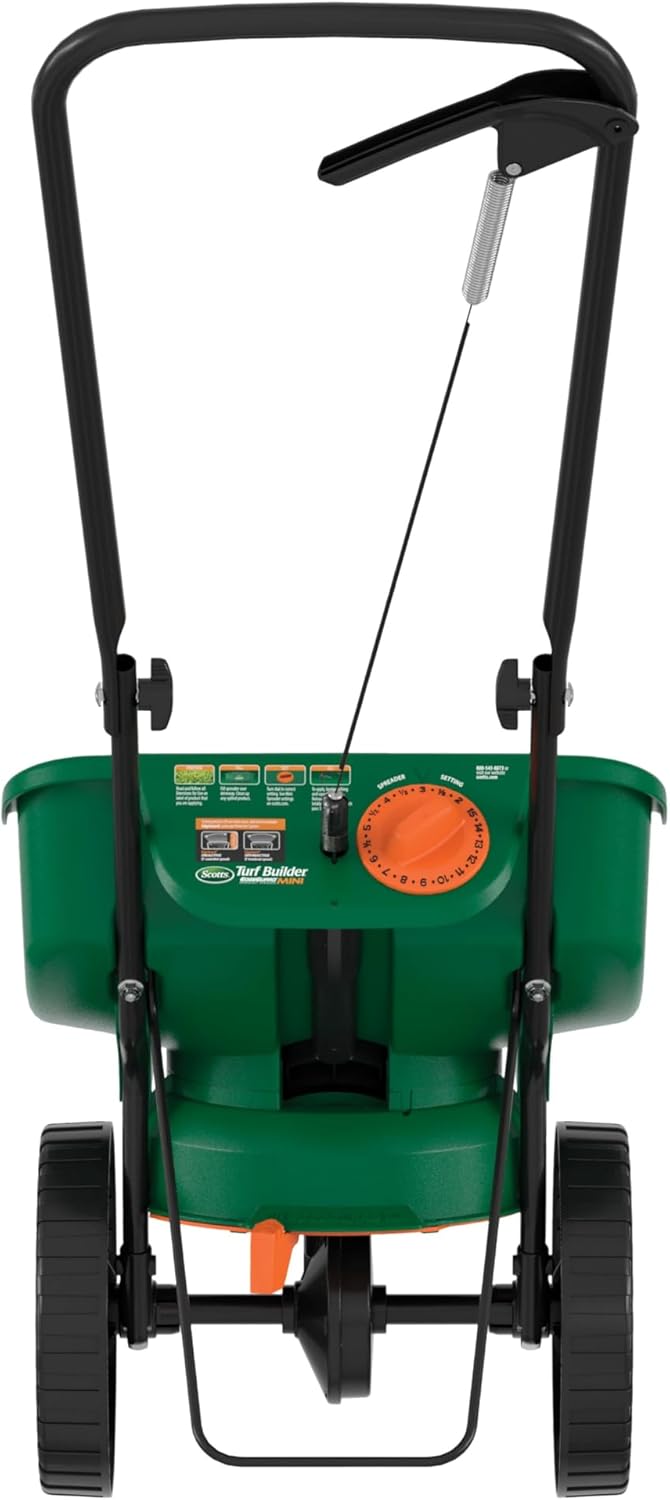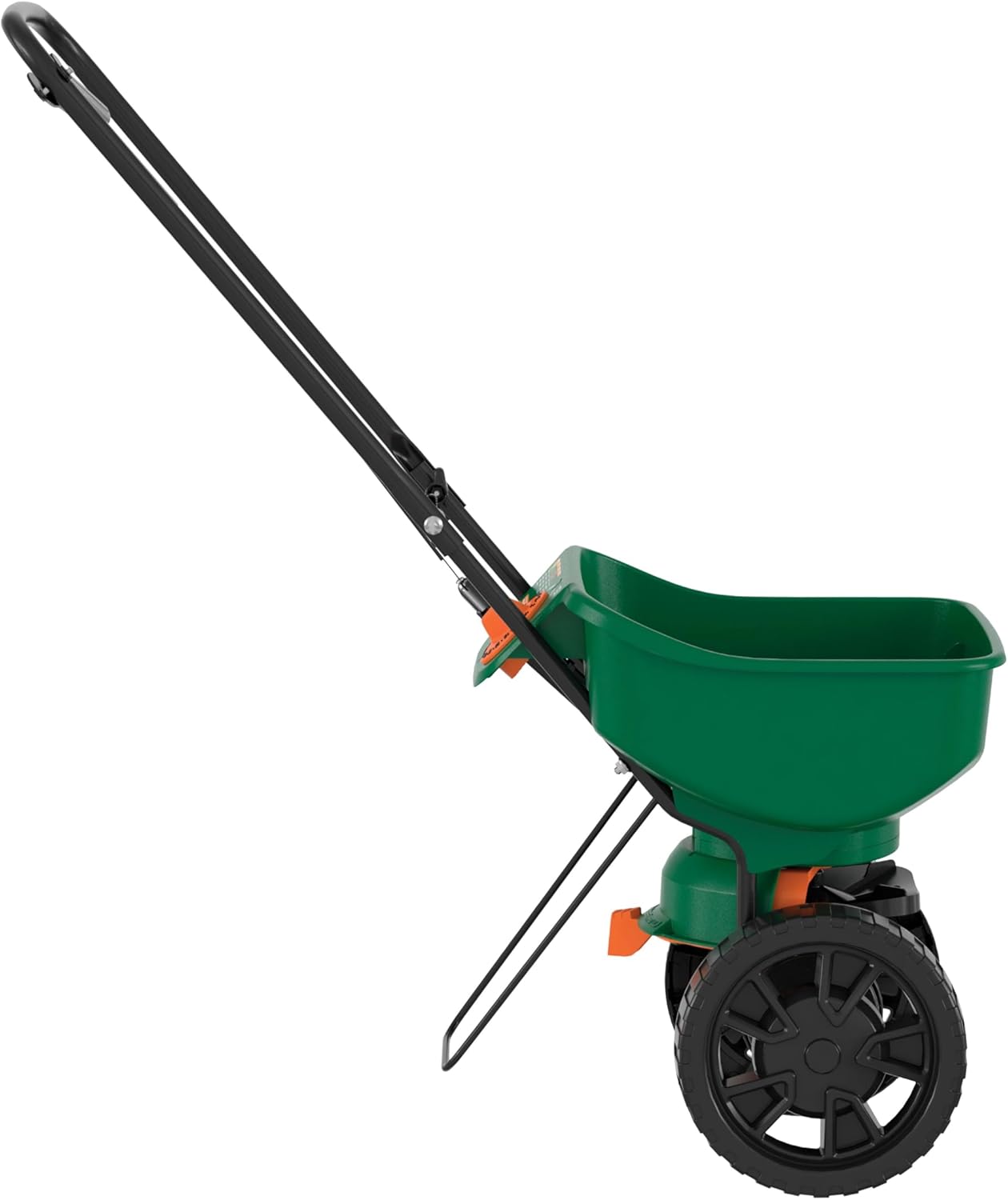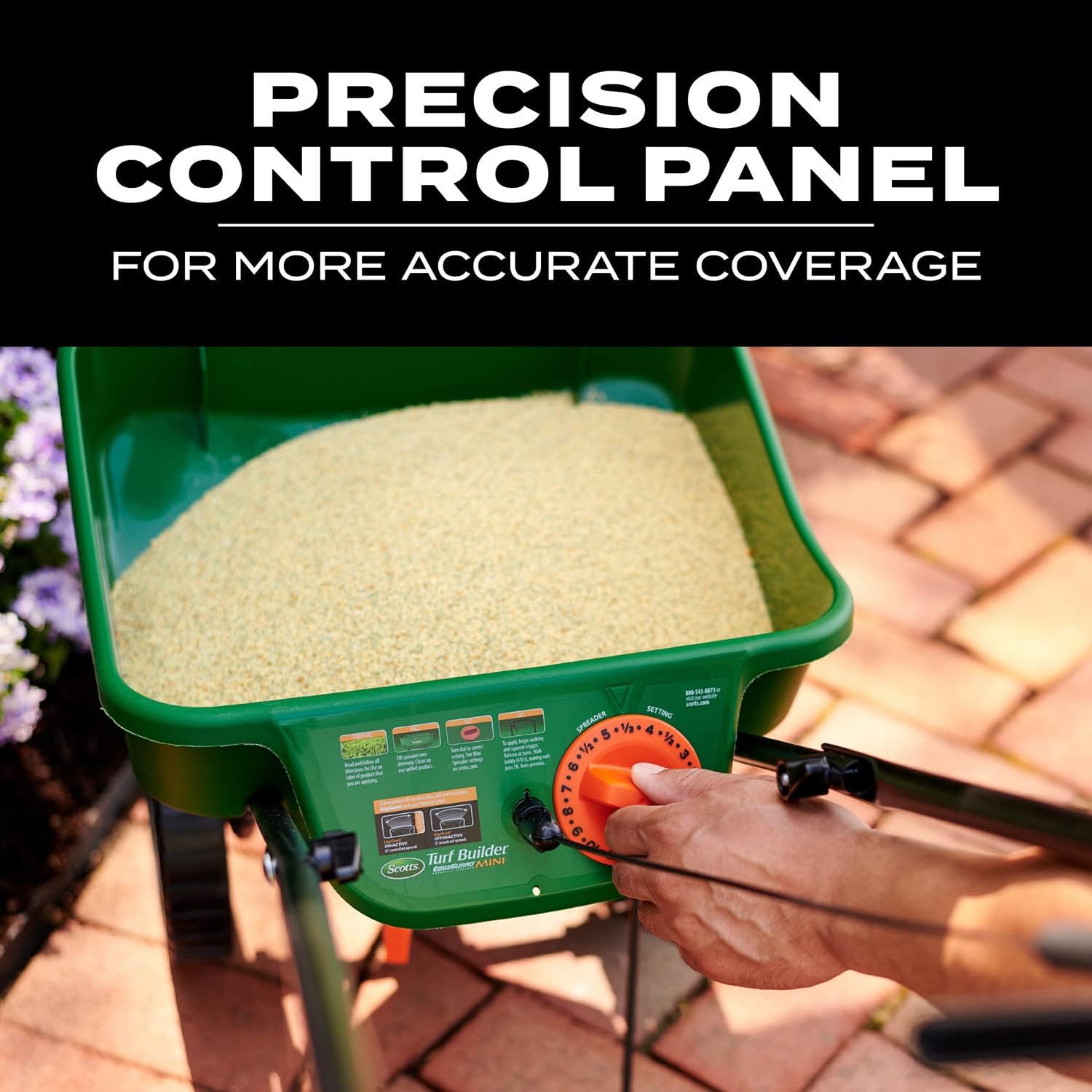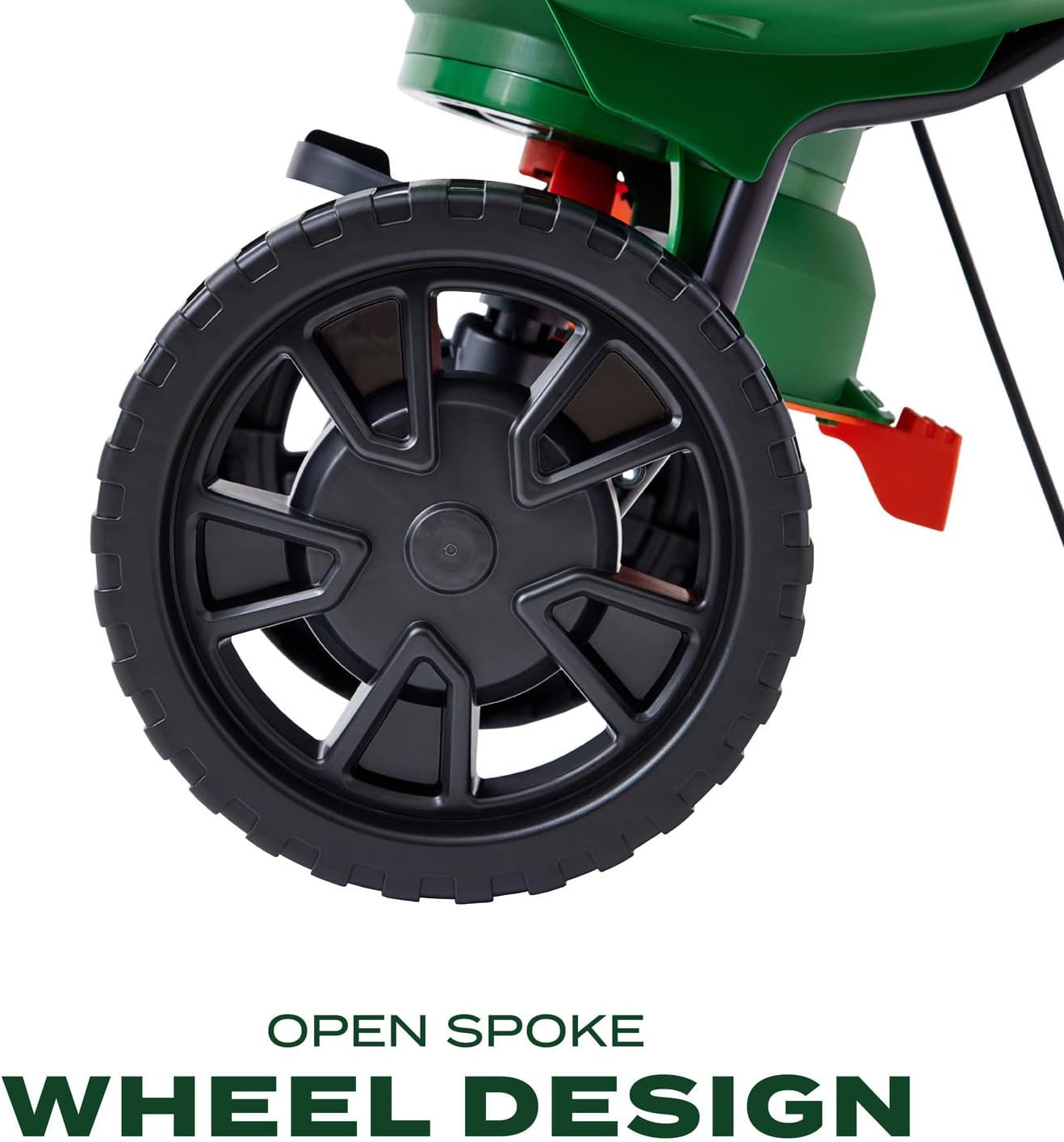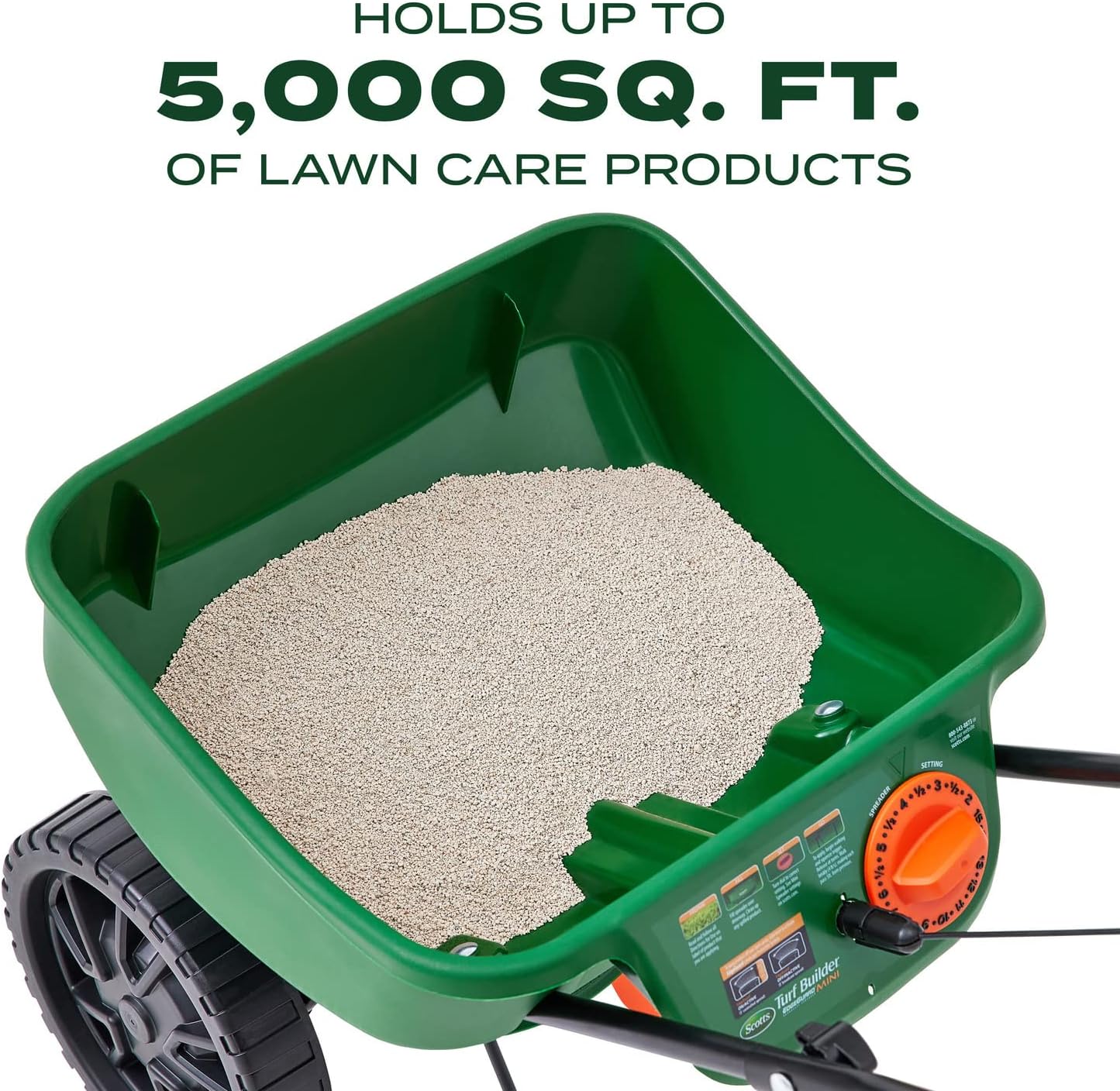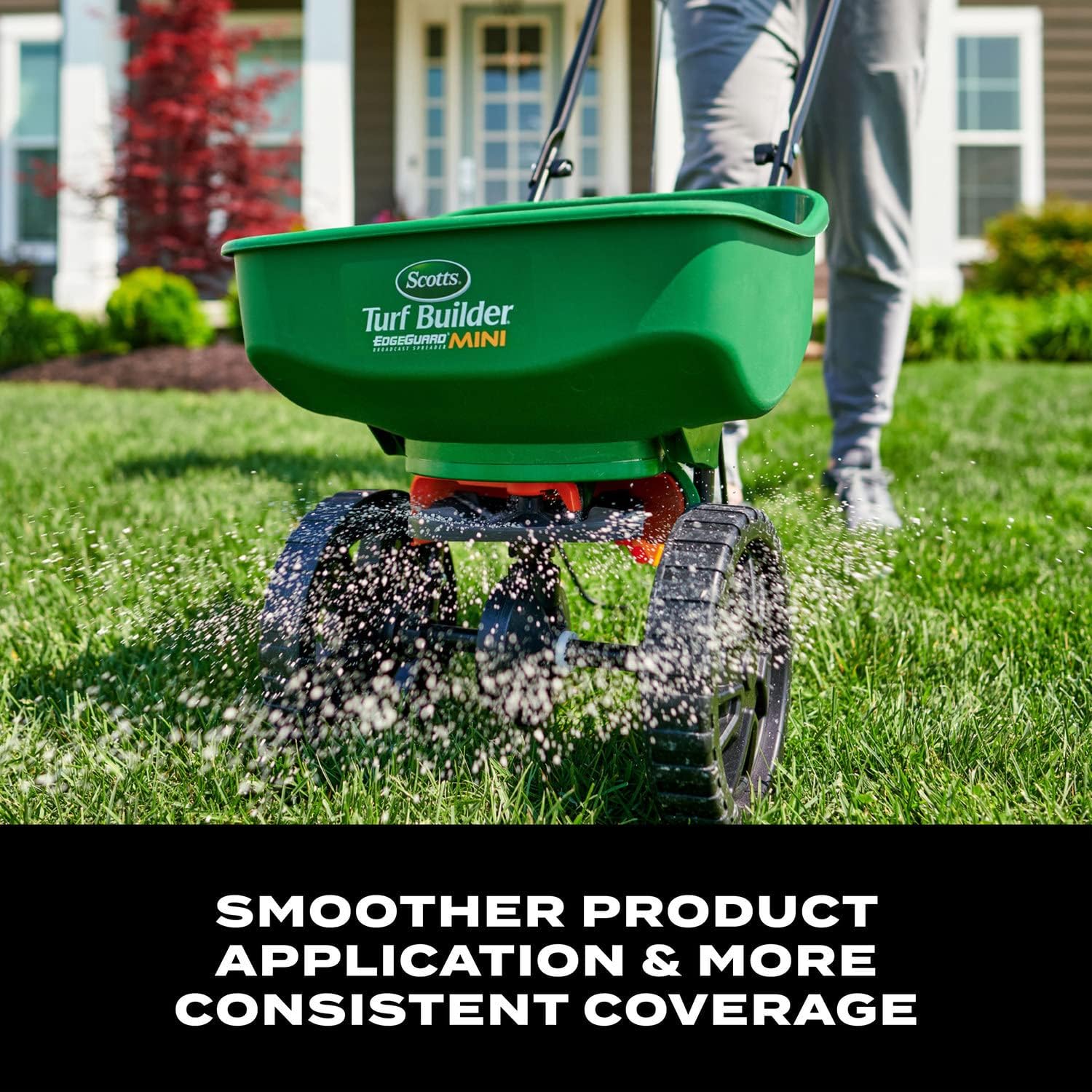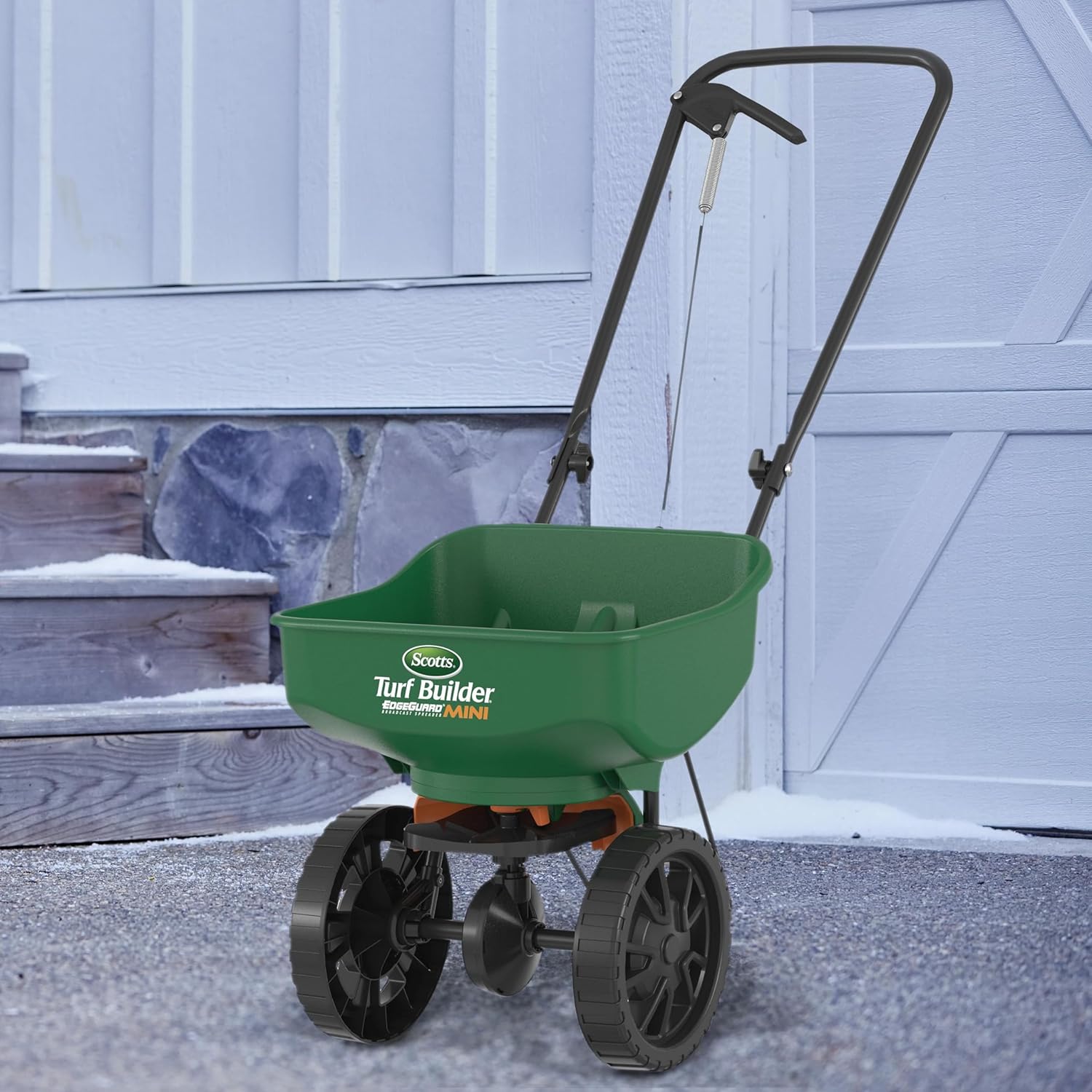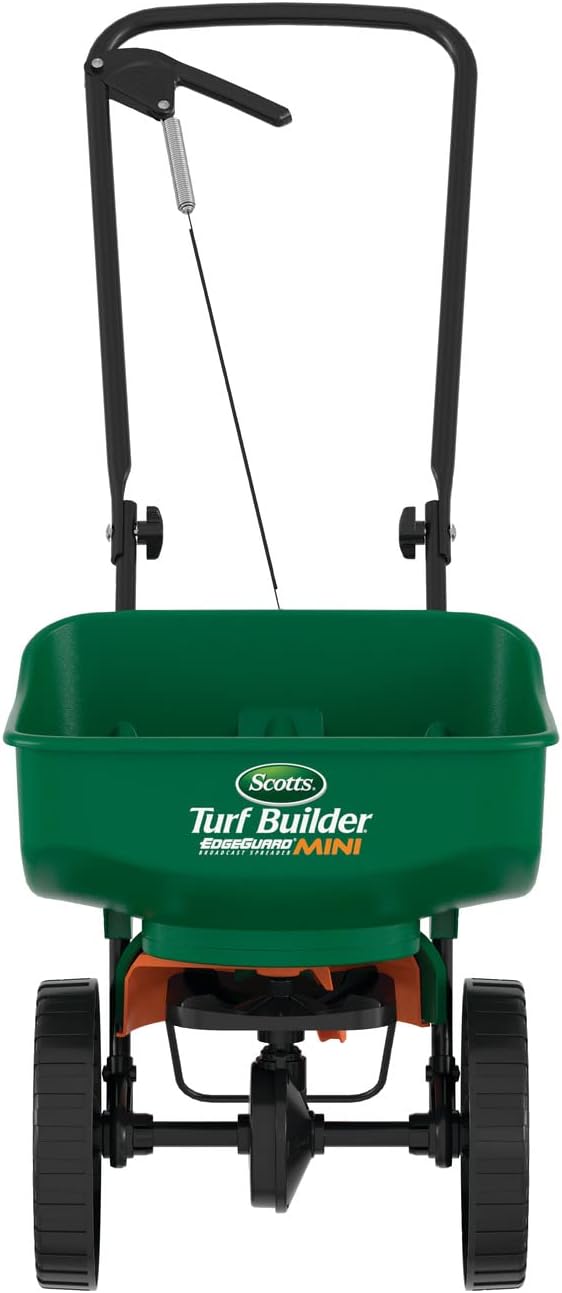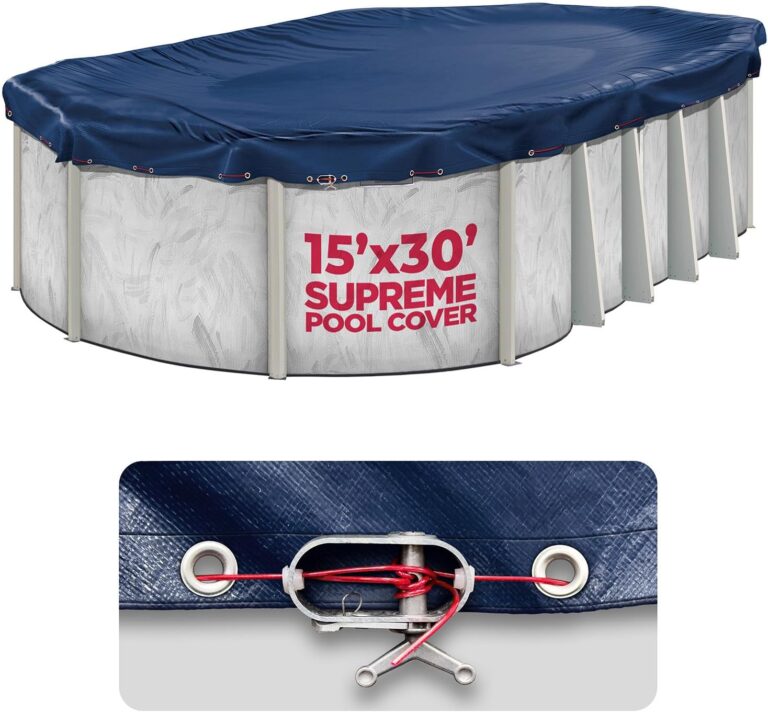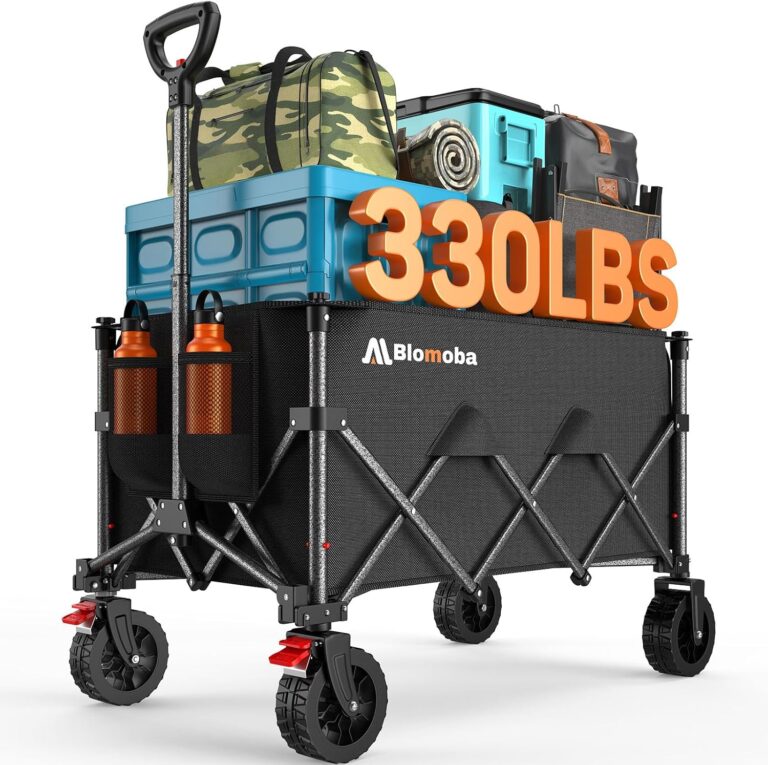The Scotts Turf Builder EdgeGuard Mini Broadcast Spreader makes lawn care simple and efficient. With coverage up to 5,000 sq. ft., it evenly distributes fertilizer, seed, salt, or ice melt while its EdgeGuard® technology prevents product from spreading onto sidewalks and driveways. Compact and easy to store, it’s a reliable tool for a healthier lawn—click to learn more.
If you’re aiming for a well-fed, even lawn and want a push-broadcast spreader that can handle seed, fertilizer or even ice-melt, the Scotts Turf Builder EdgeGuard Broadcast Spreader is a popular option. It features the brand’s EdgeGuard™ technology which is designed to keep product off driveways, sidewalks and landscaped edges. The spreader comes pre-calibrated and ready to use out of the box.
Key Features & Technology
- EdgeGuard™ flap: A lateral shield that helps prevent product from being spread onto non-lawn surfaces, such as driveways and sidewalks.
- Pre-calibrated dial: Users can set the correct rate for the lawn product they’re using, based on the setting chart. Easy start-up.
- Hopper capacity and agitation system: The hopper is designed to feed granular product to the spreader consistently; some versions hold large coverage (for example up to 15,000 sq ft) depending on model.
- Durable wheels and frame: Intended for lawn-use and to roll over typical terrain, though construction quality has been a point of feedback (see below).
Performance & Real-World Use
Many users report that when used properly, the EdgeGuard spreader works well: one product listing notes “controls are easy to adjust, the spread is consistent,” which speaks to a positive user experience. For many homeowners with standard lots, the ease of setting the dial, using the EdgeGuard flap and completing the job without too much fuss is a strong plus. On review sites the product is frequently recommended for typical homeowner lawn care where moderate spreading tasks are needed.
Use-Cases & Who It’s Ideal For
- Homeowners with small to medium lawns who want a general-purpose broadcast spreader for fertilizing, seeding or applying ice-melt.
- Users who appreciate the EdgeGuard feature to keep product off non-lawn areas (especially where driveways or sidewalks border the lawn).
- DIYers looking for ease of use without complex calibration or heavy industrial-grade equipment.
- Lawn maintenance once or twice per year (seeding, fertilizing) rather than professional-scale frequent use.
Limitations & Considerations
However — there are several user complaints and nuances to be aware of:
- Some users on lawn-care forums report that certain distributions show “striping” on the lawn — meaning product deposited in lines rather than evenly. For instance: “The spreader is a terrible design… most of your material will spread between the wheels.”
And, users note that the pattern of throw may cause darker lines of product where distribution is uneven. - The EdgeGuard mechanism when engaged may reduce spread width or require walking speed/direction adjustments to maintain uniformity. One user highlighted: “The EdgeGuard setting … keeps too much material away from the right edge. This makes for uneven application if the grass is next to the fence.”
- In some reviews the build-quality (especially wheels, hopper and agitator mechanism) is called “budget” or prone to issues under heavier use.
- Because broadcast spreaders inherently depend on correct settings, walking pace, overlapping passes and ground surface, proper calibration and application technique are essential. Many lawn forums stress that user technique significantly impacts results.
Value & Final Verdict
If you have a standard sized lawn and are seeking a well-known brand spreader with built-in edge control, the Scotts EdgeGuard Broadcast Spreader offers good value and functionality. The EdgeGuard feature is a strong differentiator for homeowners with hard-scape boundaries. For occasional use it handles the job and the pre-calibration simplifies setup.
However, if you are doing frequent, large-scale seeding/ fertilizing, or if you have complex terrain, slopes or need very uniform professional-level spread patterns, you may want to consider a more premium model (with better build, better throw pattern and perhaps pneumatic tires or metal frame). The user reports of uneven coverage mean you’ll want to follow best practices: calibrate, walk steady speed, overlap passes and potentially test on a paved area before applying on lawn.

